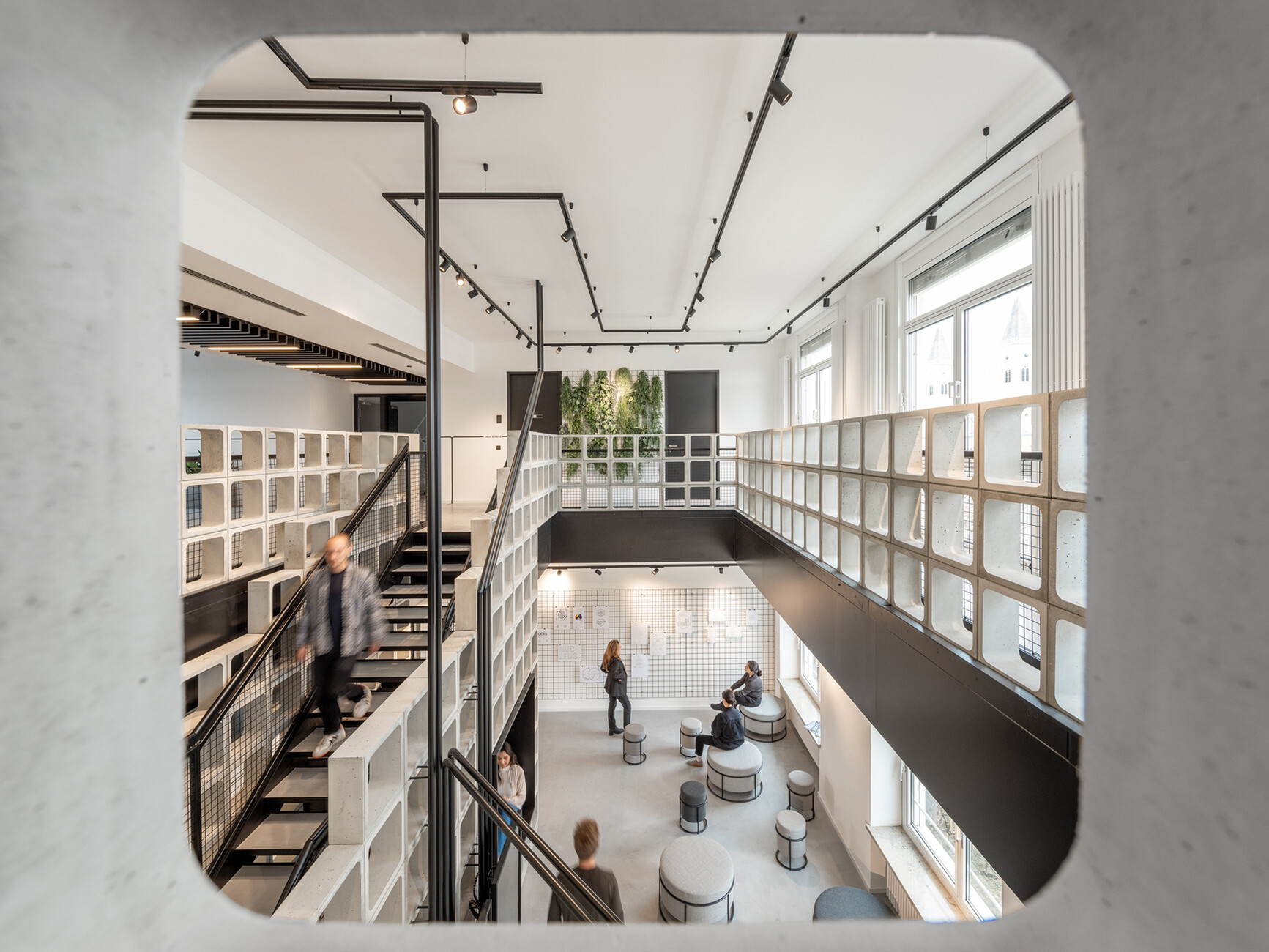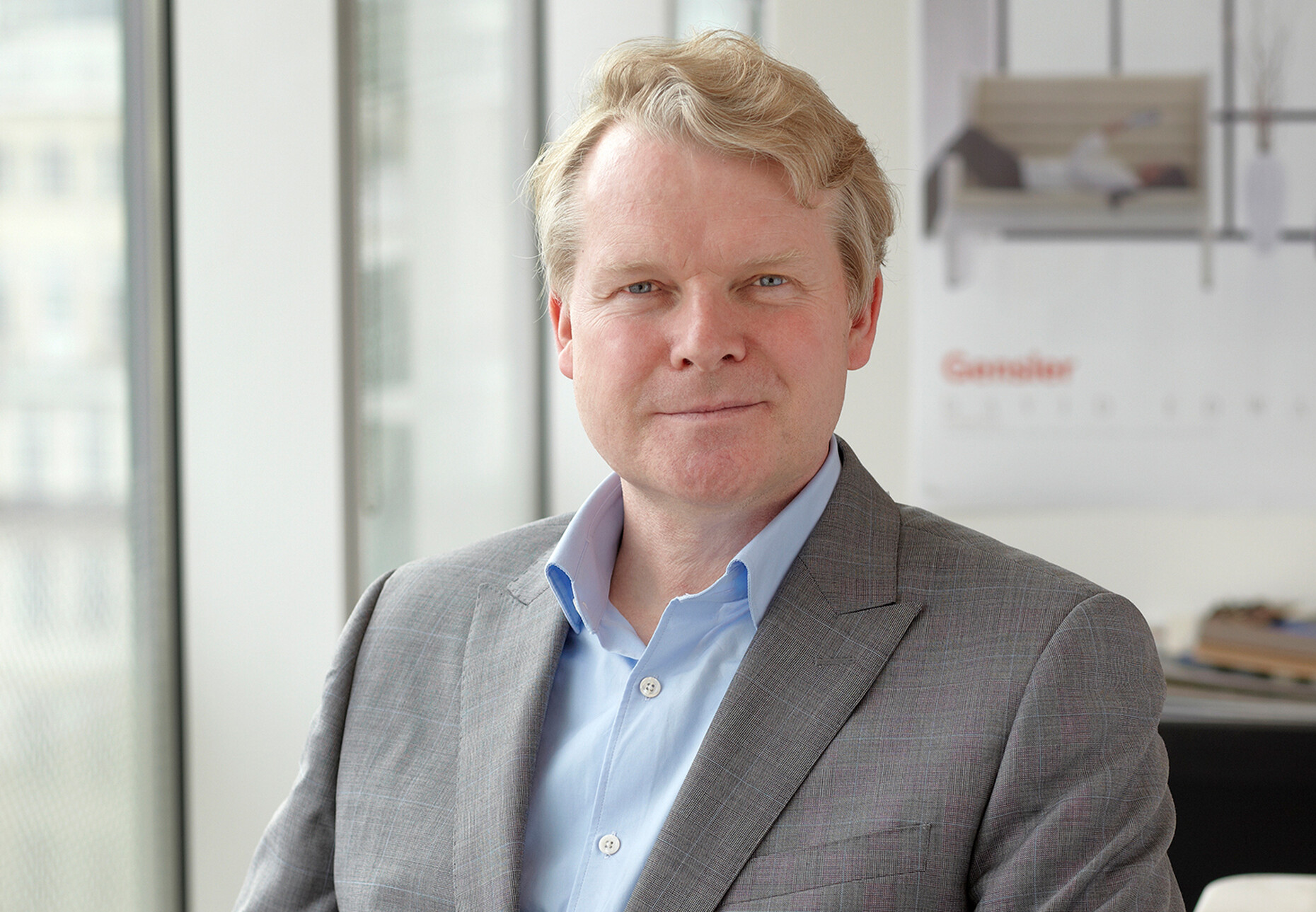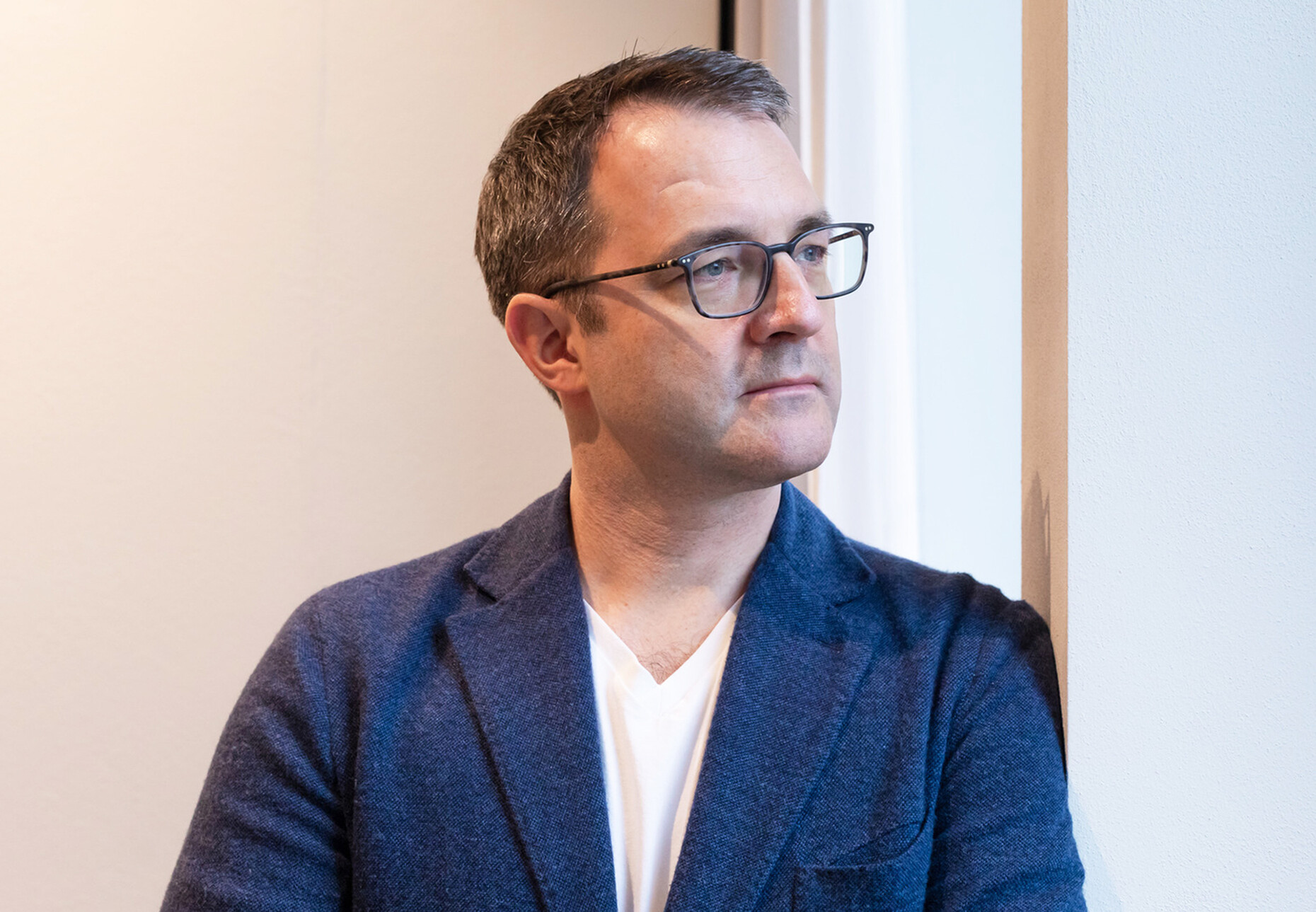Artificial Intelligence & New Work
The office as an experience multiplier
Anna Moldenhauer: How does Gensler Germany currently make use of artificial intelligence?
Lukasz Platkowski: Every year Gensler publishes its Design Forecast – a compilation of the top trends which we predict will shape the future of design and architecture and one trend we have started to see recur is the use of artificial intelligence in the design process. A few months ago, we invited one of our technology clients to share their thoughts about the future of technology in design. They shared that AI helps to support the early stages of design, elevating the starting point of conceptual thinking. They saw AI as a tool that can be used to develop ideas or to produce and present a briefing very quickly. This matches the research and work we have been developing as once this basis is established, then the actual design process, the architecture and innovation, can begin. The second use of AI, potentially significantly more impactful in the world of design, is the ability to develop a digital twin of the real building during the design stage. This digital model will be used to streamline the process, arrive at the best sustainable solutions, and ensure that we are making the right decisions regarding the construction and operation of the building. Despite its advantages, there are also some drawbacks to the use of AI. We are mindful of confidentiality with our clients as the copyright to work delivered with AI doesn’t automatically belong to the company who has generated the image or deliverables. Often these assets can be accessed and shared by others so we take care when using the tool.
So AI is also having a growing impact on your work – but what is left of the idea of New Work that we were talking about during the pandemic?
Philip Tidd: The disruptive power of AI, New Work, and the post-pandemic era are all inter-connected. Entire categories of tasks that fall into the realm of office work or knowledge and labour tasks can increasingly be handled by platforms like Chat GPT, and the work process will change and adapt as this happens. There was a good book published back in 2016 called ‘The Second Machine Age: Work, Progress, and Prosperity in a Time of Brilliant Technologies’. The author, Erik Brynjolfsson, concludes that “in the future, everything that can be automated will be automated”. Activities that are repetitive can increasingly be performed by AI. During the pandemic, working from home meant our processes and needs also changed. Interestingly, these major changes in office work have rarely been reflected in a new reconfiguration of workplaces in Germany. According to our 2024 Global Workplace Survey over the last three years, fewer than 30 percent of work environments have been redesigned – and this includes in Germany too. When one thinks about that, the last three years of the ‘post-pandemic’ era has seen a significant shift in the power dynamics between employers and employees and companies need to address this. The office should be a place where people want to go to for work and to exchange ideas with colleagues and peers. The fact that office design has barely changed thus far, though, is probably one of the reasons why lots of employees currently prefer to work from home in Germany.
”It’s interesting to note that people spend an average of around 51 percent of their time working in the office and around 20 percent working from home – regardless of what the company stipulates the physical attendance ratio should be. Business trips and appointments away from the office also count as remote work. I think that’s a very interesting indication that even companies aiming for full-time attendance in the office are not able to implement it.“
One of the points in the publication “Design for a Radically Changing World”, written by Gensler Co-Chairs Andy Cohen and Diane Hoskins, is about how the workplace should be an experience multiplier where people can have unique experiences. What does this mean when it comes to its design?
Lukasz Platkowski: We see experience multipliers paying dividends in all fields of the design – the masterplan, landscape, architecture, and digital – not just the workplace. In our research, we talk about a combination of effectiveness and experience. Effectiveness is about the functional side of office spaces. This includes ensuring the space is appropriate for its use, for example in terms of acoustics. Experience, meanwhile, relates to how people feel in the space, so it’s about emotions, which are less tangible than functions, yet arguably more impactful. We do believe, however, that the interplay of these factors is the key to a more efficient workplace.
What sort of questions do you get from clients on this topic?
Lukasz Platkowski: There are lots of questions about vacant space and how it can be used, as well as why employees prefer to work at home rather than in the office, even though the spaces have been designed to be visually appealing. Our work is based on research and analysis – with the help of data, we can determine the right answer in each case.
Philip Tidd: We help our international clients create new work environments that are increasingly focused on the experience aspect. In Germany, people would rarely think of offices as places that should offer people a positive, joyful experiences. When it comes to interior design for the hospitality industry, hotels, or clubs, however, this goes entirely without saying. The office environment lags behind in terms of the experience. According to our global research, India is the only country where experience takes precedence over effectiveness in the design of workspaces. In addition, the classic forms of work have now been expanded and enhanced by the virtual space. It’s interesting to note that people spend an average of around 51 percent of their time working in the office and around 20 percent working from home – regardless of what the company stipulates the physical attendance ratio should be. Business trips and appointments away from the office also count as remote work. I think that’s a very interesting indication that even companies aiming for full-time attendance in the office are not able to implement it. At the same time, employees who do most of their work remotely are happy to go into the office every now and again.
”Our tasks as designers are supported with the tools AI offers, but in reality, they remain the same.“
Can you predict how AI will change our industry?
Lukasz Platkowski: In my view, developments in AI and technology are often interconnected. We don’t know exactly where technology ends, and AI begins. We need to use our new tools in the best way possible – computers don’t define the questions, they answer them. New technologies speed up processes and create new ones – and yet in the real estate sector and in construction, the time it takes to develop a project has not reduced in the last 50 years. We simply achieve different results; the process itself has not been eliminated for us. We create spaces that are experienced by people, and for this we need to understand human behavior. Our tasks as designers are supported with the tools AI offers, but in reality, they remain the same.
In fall 2024 Orgatec will take place in Cologne. What trends in the market are you currently seeing that could influence what will be on display at this leading fair for modern work environments?
Philip Tidd: In recent years, the focus has shifted to office furniture that has a more homely appeal, so that it fits both in the home and has parallels with the Hospitality sector. The challenge is to change our way of thinking, particularly in Germany, because today and especially in this post-pandemic era, office work is no longer defined by the amount of time one sits at a desk in front of a monitor. Work now takes place in a wider variety of spaces and in different rooms, and sometimes even during other activities. One of this year’s themes at Orgatec – where we will be presenting our 2024 Global Workplace Survey research – could be biophilic design and the introduction of more nature into workplaces. Mankind has been working indoors, in factories and office buildings for around 250 years, but our minds have been programmed to be living outside, in nature for some 500,000 years. We know from our research that people feel better in a room where there are more plants and more natural elements.
Lukasz Platkowski: Another trend we expect to see is sustainability. This includes the circular economy and the development of long-lasting products. Not only must we ensure that materials are produced in a carbon-neutral way, but also that the circular economy is considered. We support this goal – for example, by working with manufacturers that meet our own criteria of sustainability, described in the tool we recently published – the Gensler Products Sustainability Standards (GPS). Through of work with clients around the world, at Gensler we touch over 1.25 billion square feet of buildings and spaces every year. We therefore have the ability to make a difference in our communities, neighbourhoods and cities, given the vast amount of products, finishes and furniture we use in our projects globally.
What are you currently researching?
Lukasz Platkowski: We’re already working with our global design leaders and specialists to develop the 2025 Design Forecast. All our research is published by our Gensler Research Institute which has become a valuable resource for the industry.








